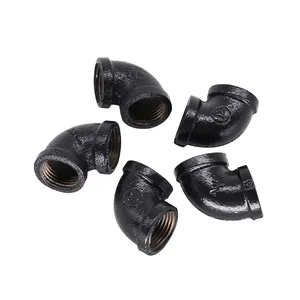

Customized PP 90 Degree Male Deg Elbow Plastic Joint PP Male Elbows Compression Fittings Pipe Joint Elbow


Jianzhi competitive price black black bi back nut pipe fittings malleable iron Elbow Nipple Tee union equal 90 elbow






















The pipe fitting bi elbow is a fundamental part of modern piping systems, designed to redirect the flow of fluids at a specific angle. These fittings are essential in both commercial and residential settings, ensuring the seamless operation of the entire pipeline network. The choice of material for a bi elbow is critical and varies based on the fluid it will transport.
Different materials serve distinct purposes within pipe systems. PVC pipe fittings, for instance, are favored for their smooth internal surface, reducing flow resistance. Their lightweight nature and cost-effectiveness make them suitable for a variety of applications. Conversely, copper pipe fittings are known for their corrosion resistance and are often utilized in underground plumbing due to their durability against external elements.
Beyond materials, the functionality of pipe fittings like pipe caps and P-traps is paramount. P-traps play a crucial role in maintaining hygiene by trapping water to prevent sewer gases from entering living spaces. Pipe caps are used to seal the end of pipes, halting fluid flow and safeguarding the threads. Each component, including the versatile pipe fitting bi elbow, is designed to fulfill a specific role within the system.
The correct selection of pipe fittings, including PVC pipe compression fittings and copper pipe compression fittings, is vital for the longevity and efficiency of the piping system. PVC fittings are advantageous for their ease of installation and maintenance, while copper fittings are preferred for their strength and resistance to wear, making them ideal for long-term use in various environments.
Designing a pipe system requires careful consideration of the types of fluids and the environmental conditions the pipes will encounter. The pipe fitting bi elbow and other components must be chosen with these factors in mind to ensure a reliable and functional system. The compatibility of the fittings with the conveyed fluids and the operational pressures is also a critical aspect of the design process.
In conclusion, the pipe fitting bi elbow is a crucial element in the construction of effective and durable piping systems. The selection of materials and types of fittings is essential to cater to the specific needs of the fluid transport and the environmental conditions of the installation. Understanding the various components and their advantages is key to designing a system that is both efficient and reliable.